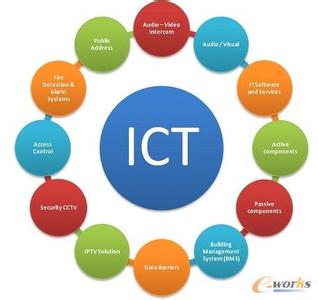The past decade has witnessed a rapid increase in technology ownership across rural areas of India, signifying the potential for ICT initiatives to empower rural households. In our work, we focus on the web infrastructure of one such ICT - Digital Green that started in 2008. Following a participatory approach for content production, Digital Green disseminates instructional agricultural videos to smallholder farmers via human mediators to improve the adoption of farming practices. Their web-based data tracker, CoCo, captures data related to these processes, storing the attendance and adoption logs of over 2.3 million farmers across three continents and twelve countries. Using this data, we model the components of the Digital Green ecosystem involving the past attendance-adoption behaviours of farmers, the content of the videos screened to them and their demographic features across five states in India. We use statistical tests to identify different factors which distinguish farmers with higher adoption rates to understand why they adopt more than others. Our research finds that farmers with higher adoption rates adopt videos of shorter duration and belong to smaller villages. The co-attendance and co-adoption networks of farmers indicate that they greatly benefit from past adopters of a video from their village and group when it comes to adopting practices from the same video. Following our analysis, we model the adoption of practices from a video as a prediction problem to identify and assist farmers who might face challenges in adoption in each of the five states. We experiment with different model architectures and achieve macro-f1 scores ranging from 79% to 89% using a Random Forest classifier. Finally, we measure the importance of different features using SHAP values and provide implications for improving the adoption rates of nearly a million farmers across five states in India.
翻译:过去十年,印度农村地区技术所有权迅速增加,这表明了信息和通信技术倡议增强农村家庭权能的潜力。在我们的工作中,我们侧重于一个这类信通技术的网络基础设施——数字绿色。2008年开始采用参与式方法生产内容,数字绿色通过人文调解员向小农户传播农业教学视频,以改善农耕做法的采用。他们的网络数据追踪器Coo收集了与这些进程有关的数据,储存了三大洲和十二个国家的230多万农民的出勤和收养记录。我们利用这些数据,模拟了数字绿色生态系统的组成部分,其中包括过去农民的就学行为、为他们放映的视频内容及其在印度五个邦的人口特征。我们利用统计测试来确定不同因素,区分采用率较高的农民的原因,以更好地理解他们为什么采用耕作做法。我们的研究结果发现,采用较短时间的农民是小村庄。 共同参与和共同采用农民网络表明,他们从过去采用的视频中大大获益于他们的村庄和群体的重要性,他们所摄取的视频内容以及印度五个邦的人口特征。我们使用近五个邦的视频测试方法,最终通过视频分析,我们用一个不同比例的视频分析,我们使用一个不同等级的每个州,我们使用一个视频序列的模型,我们使用一个不同的方法,可以用来分析。




